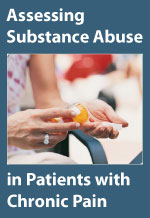The National Institutes of Health estimate that 25.3 million adults are in chronic pain, which they define as pain nearly every day for at least three months. Moreover, the National Health Interview Survey, conducted in 2015, found that 1 in 10 Americans suffer from some form of pain every day, but even more concerning, 17.6 percent of Americans suffer from “severe levels” of chronic pain.
However, according to research presented at the ANESTHESIOLOGY® 2018 annual meeting, there is new hope for those who suffer from chronic pain.
Using dorsal root ganglion stimulation (DRG) – an innovative treatment that short circuits pain – Robert J. McCarthy, a professor of anesthesiology at Rush University Medical Center, Chicago and his team implanted devices in 67 people with chronic back pain. Patients were then followed for 3 to 18 months. Among their results:
- Before implantation of the DRG device, most participants described their pain as 8 on a scale of 1 to 10 (with 10 being the worst pain imaginable). After follow-up, the median (most common) pain score fell to 5, a decrease of 33 percent, which the authors note is a clinically significant improvement.
- Patients reported a 27 percent decrease (median) in disability, or patient-reported limitations to daily living, due to pain.
- 94 percent of patients reported the treatment was beneficial (McCarthy et al., 2018).
“People in our study who had DRG stimulation reported significant improvement in pain even after a year, which is notable. They had tried numerous therapies, from drugs to spinal cord stimulation to surgery, but got little to no lasting pain relief. For most, DRG stimulation really improved their quality of life” (McCarthy, 2018).
Why DRG works, notes McCarthy, is due to the way chronic pain affects pain signals. In cases of chronic pain, nerves continue to send signals to the brain after the original source of the pain is gone. DRG stimulation disrupts these pain signals by specifically targeting the nerves responsible for the pain.
Essentially, DRG serves as the pain and sensation gateway between nerves in different parts of the body and the spinal cord and brain, and in doing so, interrupts the pain signal between the painful area and the brain.
Not just does DRG target the specific pain source, unlike spinal cord stimulation, another treatment for chronic pain, lower levels of current are required to achieve benefits.
As the rising rate of opioid use can perhaps be explained in part by the enormous amount of people who suffer with chronic pain, McCarthy notes, “There is a real need for non-drug therapy relief for people with chronic pain” (McCarthy, 2018).
Let’s hope that DRG is that relief.
—
Related Online Continuing Education (CE) Course:
 Living a Better Life with Chronic Pain is a 5-hour online continuing education (CE/CEU) course that “walks” readers through the process of replacing their self-defeating chronic pain issues with healthy, positive, and productive life-style behaviors.
Living a Better Life with Chronic Pain is a 5-hour online continuing education (CE/CEU) course that “walks” readers through the process of replacing their self-defeating chronic pain issues with healthy, positive, and productive life-style behaviors.
Certainly no one would choose a pain-filled body over a healthy, pain-free body. Yet every day, people unwittingly choose actions and attitudes that contribute to pain or lead to other less-than-desirable consequences on their health, relationships or ability to function. These actions and attitudes are what are called self-defeating behaviors (SDBs) and they keep us from living life to the fullest—if we let them. This course progresses from an analysis of the emotional aspects of living with chronic pain to specific strategies for dealing more productively with it. Through 16 guided exercises, readers will learn how to identify their self-defeating behaviors (SDBs), analyze and understand them, and then replace them with life-giving actions that lead to permanent behavioral change. Course #50-12 | 2014 | 49 pages | 35 posttest questions
—
Professional Development Resources is a nonprofit educational corporation 501(c)(3) organized in 1992. We are approved to sponsor continuing education by the American Psychological Association (APA); the National Board of Certified Counselors (NBCC); the Association of Social Work Boards (ASWB); the American Occupational Therapy Association (AOTA); the American Speech-Language-Hearing Association (ASHA); the Commission on Dietetic Registration (CDR); the Alabama State Board of Occupational Therapy; the Florida Boards of Social Work, Mental Health Counseling and Marriage and Family Therapy, Psychology & School Psychology, Dietetics & Nutrition, Speech-Language Pathology and Audiology, and Occupational Therapy Practice; the Georgia State Board of Occupational Therapy; the New York State Education Department’s State Board for Mental Health Practitioners as an approved provider of continuing education for licensed mental health counselors (#MHC-0135); the Ohio Counselor, Social Worker & MFT Board and Board of Speech-Language Pathology and Audiology; the South Carolina Board of Professional Counselors & MFTs; the Texas Board of Examiners of Marriage & Family Therapists and State Board of Social Worker Examiners; and are CE Broker compliant (all courses are reported within a few days of completion).
Earn CE Wherever YOU Love to Be!




